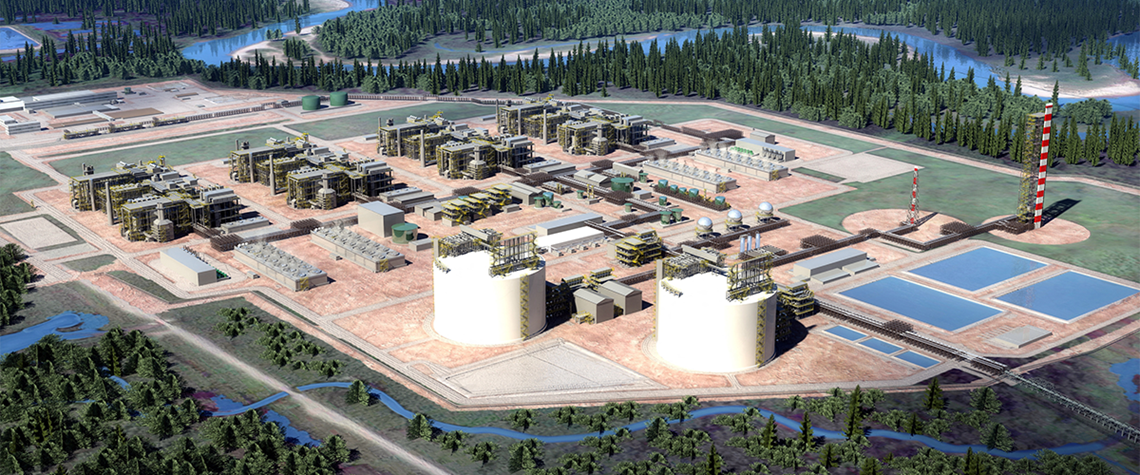The Canadian Association of Petroleum Producers (CAPP) is a trade organisation that represents the companies that explore for, develop and produce oil and gas throughout Canada. Petroleum Economist spoke to Lisa Baiton, CAPP’s president and CEO, and Greig Sproule, the organisation’s vice-president of tolls and tariffs, about the issues facing the sector.
How have the geopolitical events of the past two years changed Canada’s place in the global energy landscape?
Baiton: The world has shifted dramatically over the past two years, and we are seeing decades-old trading alliances—particularly around energy—changing rapidly. As one of the few stable, democratic countries that produces more energy than we consume, Canada is well positioned to grow our role as a preferred global supplier of responsibly produced energy. We are the fifth-largest exporter of oil in the world, representing only about 4% of global oil production. But if you break it down a bit further, Canada makes up about 22% of total NATO oil production, making us an incredibly important player in the energy security of our allies. Canada has a responsibility to our NATO allies and trading partners. As energy demand grows, we must step into that role by growing our global market share to contribute to greater global energy security while enabling a thriving Canadian oil and gas industry for generations.
How are Canadian producers responding to that change?
Baiton: The first step is gaining greater market access so we can provide more energy to the world. In terms of oil, the Trans Mountain Expansion Project, which is nearing completion, will increase our capacity to export oil by about 590,000b/d. Including the capacity of the Trans Mountain pipeline, this means we will be able to transport more than 800,000b/d directly to the west coast of Canada. On the gas side, within the next two years we expect to have our first globally significant LNG export terminal complete, and we have two others starting construction.
We have the oil and gas reserves to grow production to match our export capacity. With additional pipeline capacity coming and the emergence of our LNG export industry, Canada is poised to become a much bigger player in providing our coveted energy supplies to global markets.
Is there a place for Canadian oil and gas in the transition to a low-carbon economy over the next 20 years?
Baiton: We believe the need for Canadian oil and gas will grow. CAPP members are investing significant dollars into developing and implementing cutting-edge technologies, such as the Quest carbon capture facility, which has so far captured over 5m t of CO₂, and the electrification of gas facilities in British Columbia, which has reduced emissions by an amount comparable to taking 180,000 cars off the road. With projects already under way, Canada's oil sands companies have taken on the technologically challenging task of following a path to net zero. Federal and provincial government numbers show that oil and gas producers are on track to reduce methane emissions by 40–45% by 2025. We believe Canadian producers are among the world leaders in the drive to lower emissions from oil and gas production—and they are on a path that will enable Canadian resources to play a greater role in the global energy market for decades to come.
How would you describe the policy regime for oil and gas producers in Canada?
Baiton: The country has almost all the right pieces to enable the growth of a lower-emission oil and natural gas industry developing some of the most responsibly produced energy in the world. We have world-class resources and world-class talent, and a reputation as a safe and secure trading partner. We just need to get the policy and regulatory pieces right. Today, there is unnecessary complexity across jurisdictions. We need to work collaboratively with the federal and provincial governments to attract more energy investment dollars and investment partners to build the big emission-reducing projects here in Canada.
Canada will soon have one LNG export project with LNG Canada. Do you think there is potential for more?
Baiton: The IEA predicts gas demand will increase to 5tcm in 2050 from 4tcm in 2019, and countries are looking to Canada to ramp up gas and LNG production and exports. There is a growing market for Canadian LNG, and we have the gas resources and upstream expertise to support significant export capacity.
With LNG Canada nearing completion, Canada is on the cusp of becoming a global LNG player. Two other facilities, Woodfibre and Cedar LNG, are under construction and others are under consideration, including an expansion of LNG Canada. Getting these projects done would show the world that Canada is serious about playing a role in global energy security with LNG trade with the potential to grow—and that can attract greater interest and investment.
Tell us about CAPP’s work on Indigenous engagement.
Baiton: Indigenous communities in Canada are playing an important and growing role in the development of our oil and gas resources. Indigenous communities are often in more remote areas alongside our operations, and they have become a critical part of our talent labour pool. About 7% of the oil and gas workforce is comprised of Indigenous people. In addition to the participation in the workforce, Indigenous-owned and affiliated businesses make up a significant part of the industry’s supply chain. As an example, a recent analysis of British Columbia’s gas supply chain showed approximately C$765m ($580m) was spent on procurement with 135 Indigenous-affiliated businesses throughout Canada from 2018 to 2021. Going beyond supply chain benefits, Indigenous organisations are becoming direct owners of oil and gas infrastructure. In British Columbia, the Haisla and Nisga'a nations are lead investors in major proposed LNG projects, and 16 First Nations have agreed to become 10% owners in the Coastal GasLink pipeline. In Alberta, 23 Indigenous communities own a nearly 12% stake in seven operating oil sands pipelines.
Is midstream capacity an issue in constraining Canada’s gas production? If so, is this likely to be addressed in coming years?
Sproule: Midstream capacity continues to be a constraining issue for gas production in Canada. Today, virtually all Canadian gas is consumed within North America, and there are a number of incremental projects under way to improve that domestic network. Those projects will also enable improved access to the US Gulf Coast to supply LNG exports out of the US. One of the challenges is that expansions are taking a minimum of 4–6 years to complete, which means we need to work with governments in Canada to streamline the regulatory process for getting our products to market. The next large growth opportunity is set to start in 2024/25 with the Coastal GasLink pipeline, which will supply west coast LNG export facilities with about 2.1bcf/d, offering significant growth potential for gas production in Canada.











Comments